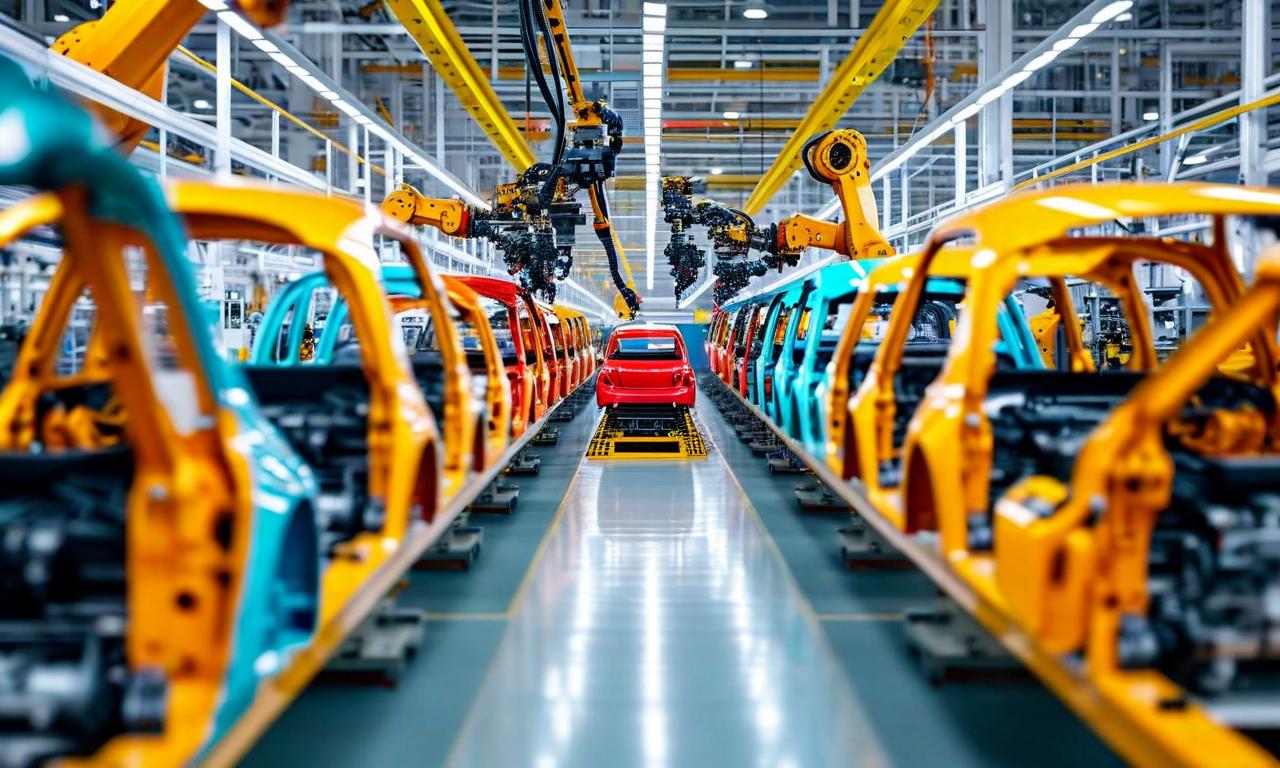Potential GST Rate Cut Could Boost Indian Auto Sector Demand by 5-10%: Nomura
The Indian government is considering reducing GST rates on vehicles, potentially increasing demand by 5-10%. Small cars and two-wheelers may see rates drop from 28% to 18%, while larger cars could see a reduction from 43-50% to around 40%. This could lead to price cuts of 3-10% on popular models. Maruti Suzuki and Mahindra & Mahindra are expected to be the main beneficiaries. However, high-end motorcycles might face increased taxes, and the EV adoption could be delayed. The move could result in an annual revenue loss of ₹54,000 crore for the government after accounting for increased sales volumes.

*this image is generated using AI for illustrative purposes only.
The Indian automobile industry may be in for a significant boost as the government considers rationalizing Goods and Services Tax (GST) rates on vehicles. According to a report by Nomura, this potential move could increase demand across various segments by 5-10%, bringing substantial changes to the auto market landscape.
Proposed GST Rate Changes
The government is contemplating reducing GST rates on small cars and two-wheelers from the current 28% to 18%. For larger cars, the proposal suggests a reduction from the existing 43-50% to approximately 40%. These changes, if implemented, could result in notable price reductions for popular models:
| Model | Price Cut |
|---|---|
| Maruti Suzuki WagonR | 9.00% |
| Mahindra Bolero | 10.00% |
| Mahindra XUV700 | 7.00% |
| Maruti Suzuki Brezza and Hyundai Creta | 3.00% |
Impact on Automakers
Maruti Suzuki and Mahindra & Mahindra are expected to be the primary beneficiaries of this potential GST rate cut. With portfolio exposures of 68% and 52% respectively to the affected segments, these companies stand to gain significantly from increased demand.
The proposed tax reduction could also lead to improved profit margins for auto manufacturers, with estimates suggesting a potential increase of 100-150 basis points.
Potential Challenges
While the proposed changes bring good news for most of the auto sector, some segments may face challenges:
High-end Motorcycles: Bikes with engine capacities above 350cc could see an increase in taxes from 31% to 40%, potentially impacting sales in this niche segment.
Electric Vehicles (EVs): The GST reduction on conventional vehicles might widen the price gap between EVs and internal combustion engine (ICE) vehicles. This could potentially delay the adoption of electric vehicles by 2-3 years.
Financial Implications
The proposed GST rate cut is not without its fiscal challenges. Initial estimates suggest that the move could result in an annual revenue loss of ₹74,000 crore for the government. However, the increased vehicle volumes resulting from lower prices could partially offset this loss, potentially reducing the net impact to ₹54,000 crore.
Market Outlook
The auto sector is likely to view these potential changes positively. With the prospect of increased demand and improved profit margins, automobile manufacturers may be poised for growth. However, the impact on the EV segment and the government's fiscal balance will be crucial factors to watch as this proposal develops.
As the industry awaits official confirmation and details of the proposed GST rationalization, stakeholders across the auto sector will be keenly observing how these changes could reshape the market dynamics in the coming years.





























